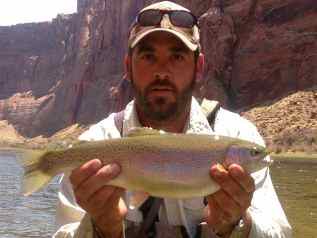Helping desert tortoises the right way during monsoon season

by Arizona Game & Fish Department
7-27-2013
Website
PHOENIX -- Monsoon season brings one of the southwest desert's most iconic creatures out of their burrows and out-and-about across the state. Desert tortoises are now in their most active season and more likely to be seen by the public.
The Arizona Game and Fish Department asks the public to follow these important guidelines if they encounter a desert tortoise:
Do not remove a tortoise from its habitat.
Taking a wild tortoise home is illegal in Arizona. Additionally, most tortoises stay in the same small area their entire lives, so if you move a tortoise to a new location it will not know where to find food and shelter and will likely die.
Do not release a captive tortoise into the wild. Captive desert tortoises cannot be released into the wild because they can pass diseases to wild populations and displace wild tortoises. It is also illegal to release captive animals into the wild.
Keep dogs away from both captive and wild desert tortoises. Even the most gentle dog can pose a serious threat to a tortoise.
If you come across a desert tortoise crossing a busy road, and if traffic safely permits it, pick the tortoise up and gently move it to the other side of the road. Carry the animal so that it is level to the ground, and move it in the same direction it was headed.
If you encounter a desert tortoise, Game and Fish biologists want to know. Please email the details, and a photo if you can take one without handling the tortoise, to turtlesproject@azgfd.gov.
There are two species of desert tortoise: the threatened Mojave desert tortoise found north and west of the Colorado River and the Sonoran desert tortoise, which is protected by Game and Fish.
Tortoise conservation in Arizona is supported by the Heritage Fund, a voter-passed initiative that was started in 1990 to further wildlife conservation efforts in the state through Arizona Lottery ticket sales.
The Arizona Game and Fish Department asks the public to follow these important guidelines if they encounter a desert tortoise:
Do not remove a tortoise from its habitat.
Taking a wild tortoise home is illegal in Arizona. Additionally, most tortoises stay in the same small area their entire lives, so if you move a tortoise to a new location it will not know where to find food and shelter and will likely die.
Do not release a captive tortoise into the wild. Captive desert tortoises cannot be released into the wild because they can pass diseases to wild populations and displace wild tortoises. It is also illegal to release captive animals into the wild.
Keep dogs away from both captive and wild desert tortoises. Even the most gentle dog can pose a serious threat to a tortoise.
If you come across a desert tortoise crossing a busy road, and if traffic safely permits it, pick the tortoise up and gently move it to the other side of the road. Carry the animal so that it is level to the ground, and move it in the same direction it was headed.
If you encounter a desert tortoise, Game and Fish biologists want to know. Please email the details, and a photo if you can take one without handling the tortoise, to turtlesproject@azgfd.gov.
There are two species of desert tortoise: the threatened Mojave desert tortoise found north and west of the Colorado River and the Sonoran desert tortoise, which is protected by Game and Fish.
Tortoise conservation in Arizona is supported by the Heritage Fund, a voter-passed initiative that was started in 1990 to further wildlife conservation efforts in the state through Arizona Lottery ticket sales.
More Reports
Arizona Game & Fish Department Reports
for Saturday, July 27th, 2013• Arizona Game and Fish Commission to meet August 2-3 in Flagstaff
• Arizona’s schools and universities win big from lottery ticket sales
Arizona Game & Fish Department Reports
for Friday, July 26th, 2013
Arizona Fish Report: Arizona's Fish Report -- As reported by Arizona Game & Fish Department, July 25, 2013
Arizona Fish Report: Draw results and leftover tags for 2013 fall hunts now available
